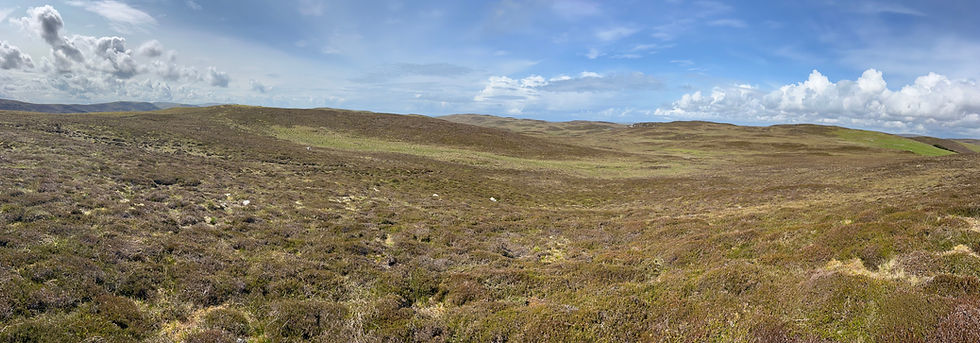Site in Focus - Ronas Hill Chambered Cairn
- Stephen Jennings

- Aug 22, 2017
- 2 min read

The Neolithic chambered cairn on the summit of Ronas Hill, Shetland’s highest point, may well be the highest chambered cairn to be found in Scotland. At an elevation of 450 metres the hill commands a view as far south as Sumburgh and Fair Isle and nearly the entirety of Shetland comes under its purview. Despite the many rare Arctic plant species, the hilltop is dominated by the stony ground and scree from which it derives its Old Norse name.
Originally believed to be of the heel-shaped variety, a type of chambered tomb specific to Shetland, the name is drawn directly from its configuration. A concave façade with a single entrance and a rounded rear gives it a pronounced heel shape as that of a boot. The entrance is normally followed by a short passage that opens to a simple chamber where grave goods would have been deposited. In this case we have a passage 2.4 metres in length leading to a rectangular chamber 1.7 X .9 metres and just over a metre high made primarily with single stone slabs. The location is not terribly unusual as they were often built in prominent locations conceivably as a way for the ancestors to keep a watch on the people below though none are quite as remarkable as Ronas Hill.
The concave façade on here is no longer in existence (see Vementry for a great illustration of this feature) and the true nature of the rounded rear is questionable because despite the remote location that allowed the chamber to survive this virtue has also led to its being altered. Some of this may have been due to stones piled up to serve as a fishing marker, certainly walkers have been adding them as they visit. It has been further alleged the military modified it during routine exercises by shoring up the front to form a rudimentary pillbox. Alas we can report with certainty some graffiti has crept in as well, the stone slabs etched here and there, and any evidence of the goods it may have contained have long vanished.
Well worth the effort to visit, the site is most easily accessed from Collafirth Hill. Do be aware that it can often become cloud covered and misty so choose your day well. For some information on the walk click here.
For Further Information:







Comments